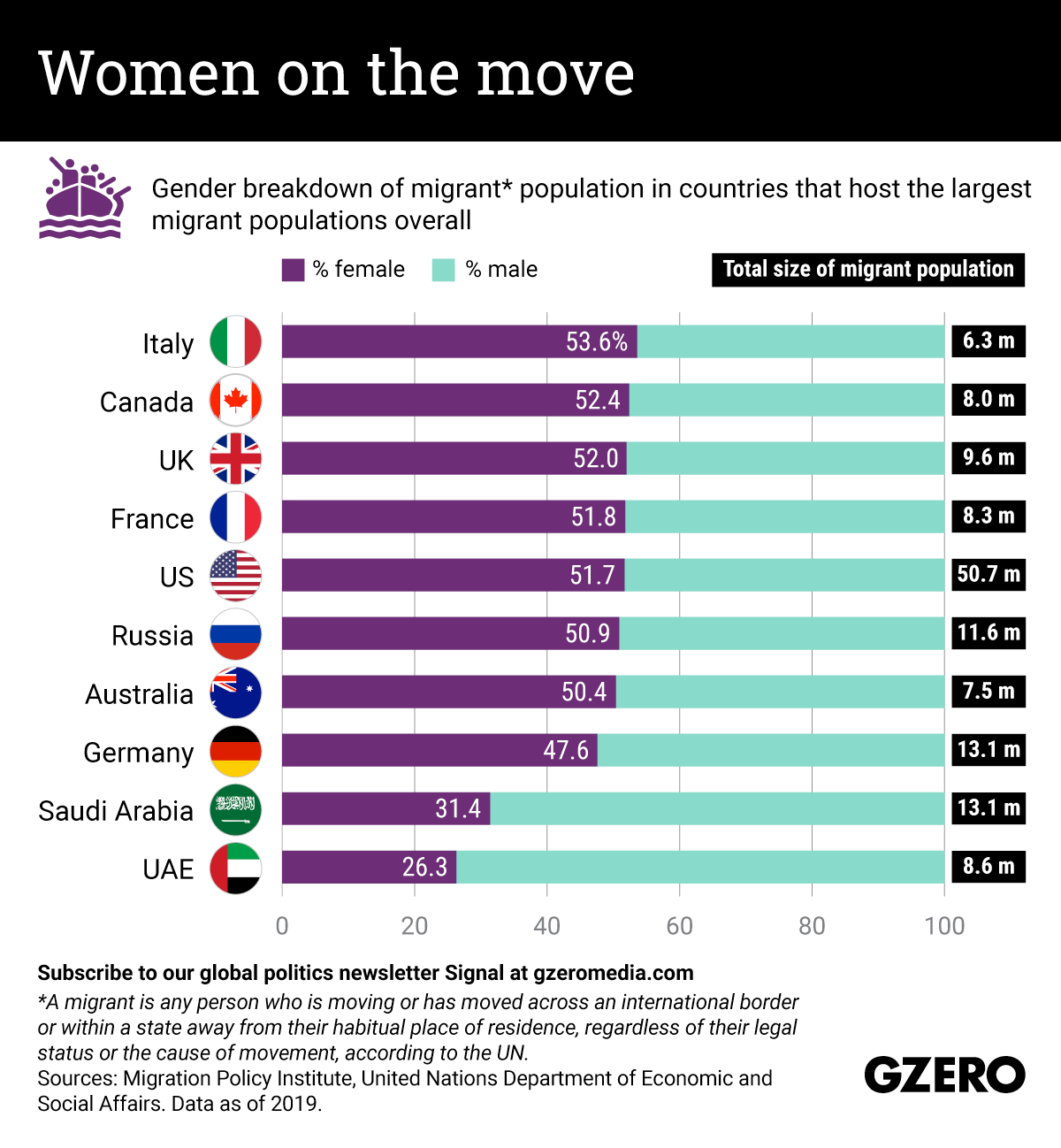March 02, 2021
Millions of people leave their home countries each year, fleeing conflict or violence, seeking better work opportunities, or simply to be closer to family. What proportion of those people are women? In many of the countries that are home to the largest migrant populations, a majority, in fact. While many women leave home for the same reasons as men (social instability or economic opportunity) gender-based violence or persecution often play a special role in women's decisions to pick up stakes and move. Here's a look at the gender breakdown of some of the world's largest migrant populations.
From Your Site Articles
More For You
Most Popular
Fishing boats moored at Taganga Beach, as fishermen express concern over unclear US government videos showing strikes on vessels during anti-narcotics operations, amid fears that those targeted may have been fishermen rather than drug traffickers, in Santa Marta, Colombia, on October 20, 2025.
REUTERS/Tomas Diaz
Walmart’s $350 billion commitment to American manufacturing means two-thirds of the products we buy come straight from our backyard to yours. From New Jersey hot sauce to grills made in Tennessee, Walmart is stocking the shelves with products rooted in local communities. The impact? Over 750,000 American jobs - putting more people to work and keeping communities strong. Learn more here.
© 2025 GZERO Media. All Rights Reserved | A Eurasia Group media company.
